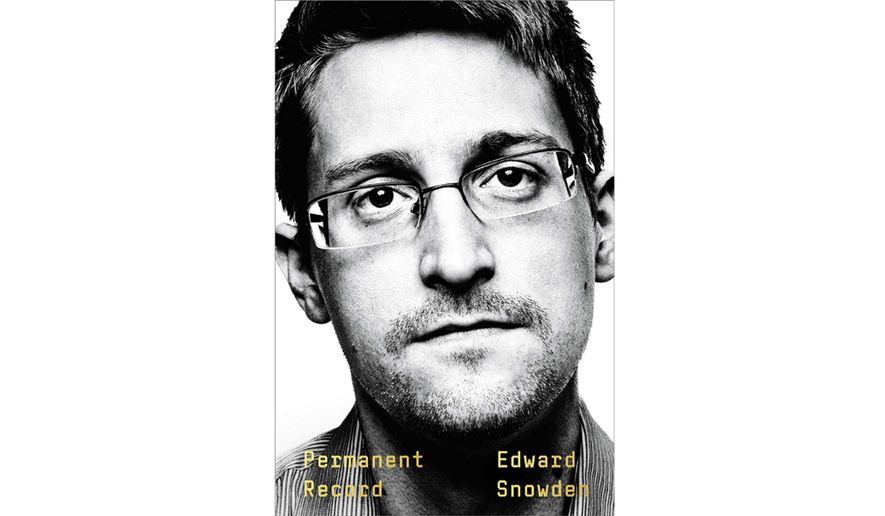OPINION:
Memoirs are usually written by people reflecting on a long lifetime. Recently, a new sub-genre has emerged written by young people. Edward Snowden and Ady Barkan, both 36 years old, have written riveting books describing different, but parallel lives. Mr. Snowden became world famous in 2013 as a National Security Agency whistleblower, while Mr. Barkan is better-known among activists.
Mr. Snowden and Mr. Barkan share a birth year and a passion for a cause. They came of age in the shadow of 9/11; this shaped their agendas and lives. But they come from contrasting backgrounds. Mr. Snowden’s ancestors sailed over on the Mayflower and his parents served the federal government while Mr. Barkan is the son of Israeli immigrants who became professors. Both enjoyed comfortable middle-class childhoods, but Mr. Snowden, a high school dropout, went to a community college and never graduated from college while Mr. Barkan has Columbia University and Yale Law School degrees. Both are very intelligent and articulate.
While Mr. Snowden begins with his childhood hacking of bedtime, Mr. Barkan goes for the jugular in the opener: Three years ago he was diagnosed with ALS (amyotrophic lateral sclerosis), a devastating and unusual sentence for a young man who had everything — a beloved wife, a newborn son, a good job and a house in the paradise location of Santa Barbara, California. Initially depressed, the disease gave him a new purpose — to fight for health care and human rights. Simultaneously, he chronicles the heart-breaking progression of the disease.
Like Mr. Barkan, Mr. Snowden was lucky in love and met his life partner in his early 20s and had a good job ending up in the paradise island of Hawaii. Progressive disillusionment changed his view of the new world of intelligence. He witnessed CIA manipulation of potential agents in Geneva. In Tokyo, he discovered that the intelligence community had falsified a document made available to the public about Stellar Wind, a warrantless mass surveillance program approved by President George W. Bush in the aftermath of 9/11. The program involved data mining of hoarded communications, including American citizens.
With a degree from Yale Law School, Mr. Barkan could have gone into lucrative corporate litigation. Instead, his experiences in New York leftist groups led him to professional activism through the Pro Democracy group. He spent a lot of time in Washington, D.C., at rallies protesting, even in a wheelchair.
Mr. Snowden, despite a lack of formal education, had a demonstrated aptitude for IT. Since there was a need in the highly technologized U.S. intelligence community for talented techies, he was hired as a contractor, a growing group in post-9/11 America, for the CIA and NSA. But instead of advancing his career, he began collecting NSA documents from around the world with a program he developed called Heartbeat. The rest of the story made headline news when he emerged in Hong Kong to meet with journalists and to provide them with the enormous trove of stolen documents purloined on SD cards. His 12-minute video broadcast to the world days after the news articles, portrayed an idealistic young man troubled by NSA abuses. He is now a public figure with 4 million Twitter followers.
Mr. Barkan will likely become better known through his memoir and the public will learn something new. For those who followed the Snowden story as it unfolded, the memoir offers much new material that does not duplicate the news stories or films. Unlike the journalists’ focus on spying on Americans, Mr. Snowden was more interested in the technological architecture of the program for “bulk collection” or mass surveillance. He was concerned that the U.S. hegemon had the ability to monitor every citizen, everywhere, at home and abroad through one keystroke.
Both Mr. Barkan and Mr. Snowden are thoughtful interlocutors. Mr. Snowden rightly points out that there is no Hippocratic Oath for technology. Laws are usually decades behind in regulating galloping technological developments. Mr. Barkan’s campaign for Medicare for All takes on particular poignancy as ALS seizes hold of his withering body.
By the end of Mr. Snowden’s memoir, it becomes apparent that he would have been outraged by any technology invading his privacy. He describes in detail his abhorrence of a robot-like, smart refrigerator he encounters at a mall that could be used to spy on him. He would likely have fled companies like Google or Amazon as an employee. They, too, hoard data on people around the world to advance sales.
By the time Mr. Barkan was confined to a wheelchair, Mr. Snowden was in exile in Moscow. They both continued to use technology to broadcast their message. Mr. Barkan stares into an eye-activated computer screen to transform his prose into a computer voice. Mr. Snowden uses his technical skills to take part in events through video-conferencing, his disembodied face on a telepresence robot. Both self-confident millennials have messages worth heeding.
• Kristie Macrakis, the author or editor of five books, teaches at Georgia Tech. Follow her on twitter @kristiemacrakis.
• • •
PERMANENT RECORD
By Edward Snowden
Metropolitan Books, $30, 352 pages
• • •
EYES TO THE WIND: A MEMOIR OF LOVE AND DEATH, HOPE AND RESISTANCE
By Ady Barkan
Atria Books, $27, 304 pages




Please read our comment policy before commenting.